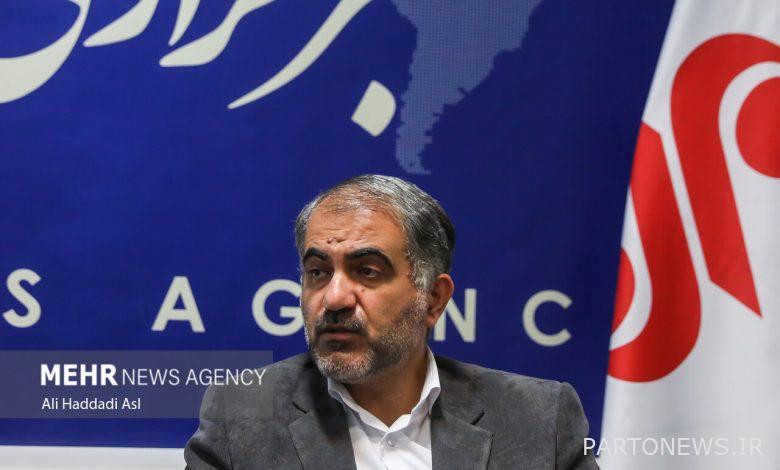88% of young people intend to get married/Identifying employment opportunities for young people – Mehr news agency Iran and world’s news

According to Mehr reporter, the 1st of Dhul Hijjah is a day in the history of Islam when Hazrat Fatima Zahra (pbuh) and Hazrat Ali Ibn Abi Talib (pbuh) tied the knot. The anniversary of the marriage of these two jewels of existence is a great event that, according to Imam Khomeini (RA), has illuminated the light of this worldly family.
On this occasion, the first week of Dhul-Hijjah is called marriage week in Iran. Mehr News Agency, during a conversation with Masoud Alami Nisi, head of the country’s Population Research Institute, discussed the situation in this field and policy proposals regarding the issue of youth employment, which you can read in detail below.
What is the current state of marriage in the country?
There are two issues in marriage policy, one is that currently young people do not want to get married and culture building should be done. The second issue is that young people want to get married, but there are obstacles and those obstacles must be removed. I prefer the second approach. Statistics also confirm the desire of young people to get married. According to the latest survey of values and attitudes, 88% of single young people of marriageable age want to get married. Therefore, if we want to talk about the cultural dimension, these statistics tell us that young people tend to get married.
Of course, it should be noted that compared to the past, there have been changes in the pattern of marriage, increasing age and desire to marry. But still a high percentage of our young people want to get married, which is a very important point. In such a way that 88% of policies should be aimed at removing obstacles to marriage and 12% should move towards changing attitudes and culture. It means that 88% of the budget should be allocated to remove obstacles to marriage and 12% of it should be allocated to work to change attitudes; In terms of human resources that are used in this field, including employees, experts, experts, and even the training of specialized human resources, from a forward-looking perspective, this should be about 88% of human resources training in order to remove obstacles to marriage; 88% of research in the field of marriage, which is a part of the field of population, should be on removing obstacles to marriage; This number speaks for us and shows the way.
Given that there are obstacles in the marriage of young people, how do you evaluate the performance of laws and policies in this area?
Regarding marriage barriers, there are two categories of policies and laws. There are a group of policies that directly address the issue. Such as the Marriage Facilitation Law of 1384, the Youth of the Population Law, the Civil Law which is less talked about but has many effects on the field of marriage, and the Family Support Law approved in 1391, the previous versions of which were approved in 1353 and 1348.
But we have many laws and regulations that indirectly affect the marriage issue, and maybe even the effect of these laws and regulations is more than the direct laws and regulations. Marriage and having children in Iranian society and culture are an indicator of the vitality of the society. A society where there is employment, mobility, dynamism and hope for the future; Marriage and childbearing will also increase. In this regard, it can be pointed out that one of the main obstacles to marriage is employment. To solve this problem, we need to look carefully. If we say that employment must be reformed, it does not mean that the entire employment and economy of the country must be reformed. Our argument is that the problem of youth employment should be solved. This is a separate issue from the whole discussion of employment and has its own methods. because the category of employment includes young people to the elderly; But we are talking about youth employment.
There are several advantages in the employment of young people. Because people have less experience, their wages are lower. As a result, economic enterprises can also hire them with a lower salary level than experienced people. Also, there is a lot of movement of young people between different jobs. Young people usually try several jobs at the beginning of their work experience to find their desired job. This second feature also affects the next feature. The third feature is that usually the jobs of young people are part-time and part-time. The young man wants to try a job that suits his mood and interests or not. The employer also wants to measure his experience and ability. These features of youth employment make it easier to create youth employment solutions.
What operational solutions are there to solve the problem of youth employment?
Let me first mention some solutions for youth employment in higher education. One way is to revive scholarships in universities. In the old days, ministries such as the Ministry of Oil and Education provided scholarships to students. This means that various organizations and ministries, when admitting students to universities, wrote in notebooks that, for example, out of 40 people admitted in a field code, 6 people get scholarships of a ministry or organization. For this purpose, an interview was conducted among the applicants and qualified people were selected. These people were paid during their studies without going to work, and when they finished their studies, they immediately started working in that organization. This work has various benefits in addition to creating employment. One of the advantages is that university courses find a more practical side. Because universities must train students who have the skills to work in the desired organization.
Of course, the scholarship is still there, but it is less compared to the number of students. But over time, as the number of students increased, the organizations and ministries changed their approach and went in the direction of hiring the desired people after their education. But in this situation where there is a problem of empty seats in universities, organizations should think of reviving the scholarship. So that the skilled people they want are hired. Also, scholarship is one of the factors that reduce elite immigration. Because if a person knows that he has a job in the future, he will think less about immigration. Especially if employment leads to marriage while a student.
Another way to increase income is student jobs. These student jobs can be research and teaching assistants, which are mostly in graduate studies. Other student jobs, like any kind of help that students do in the university, should be paid appropriately.
Another way to employ young people is the full implementation of Article 49 of the General Service Law, which is related to the payment of military service. Of course, it seems that with the follow-up of the Islamic Council, it will be implemented more than in the past.
These are examples of youth employment solutions that can be used apart from the general issue of employment.

